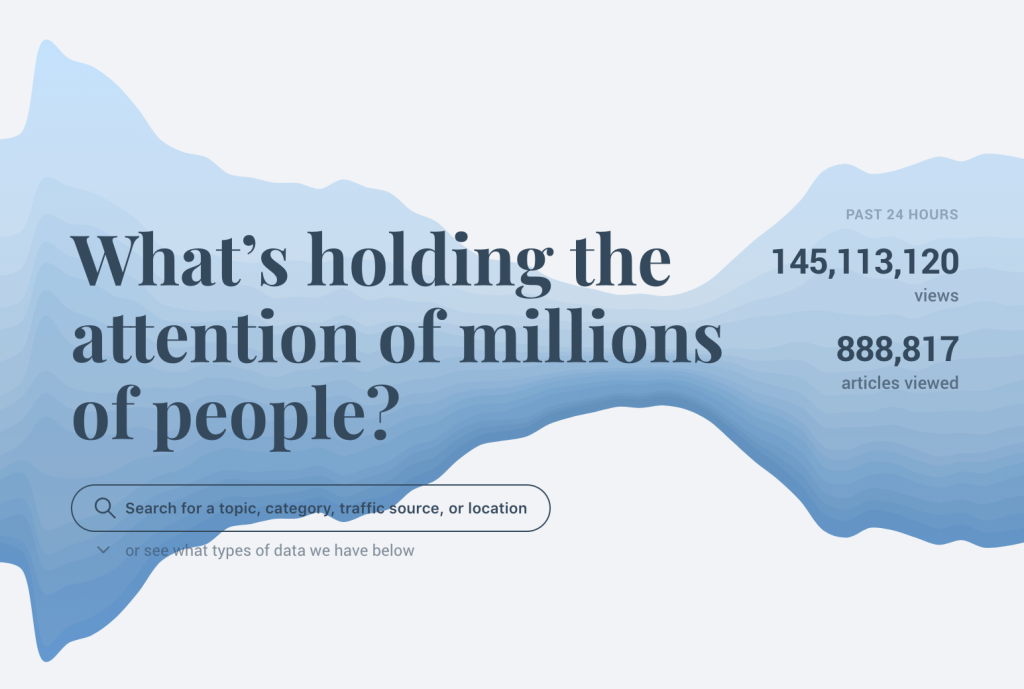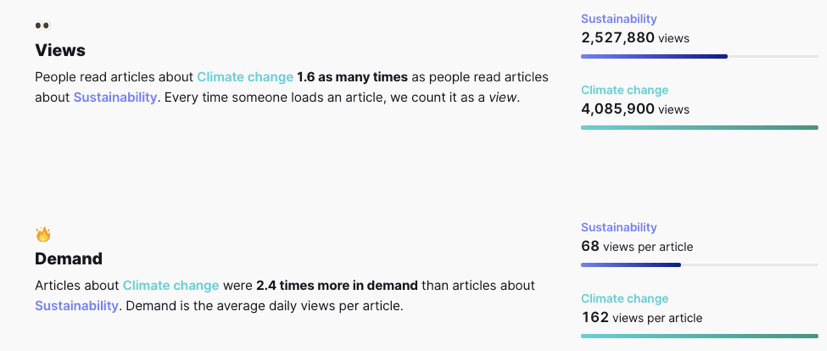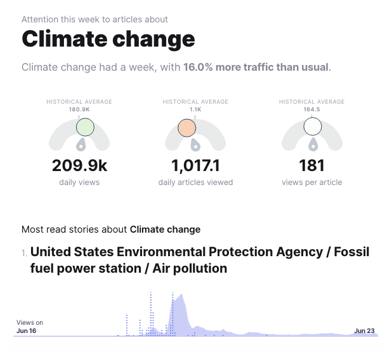Currents: Taking the guesswork out of digital content

Allow me to philosophize for a moment. Our attention is constantly divided. With so many things competing for our time online, the content we choose to read or watch reveals what we care about.
It’s why Netflix thinks of Fortnite as a bigger competitor than HBO. Attention data matters because attention is a limited resource.
When you understand what makes people pay attention, you’re better equipped to uncover their motivations and interests, and anticipate their behavior. Getting attention isn’t a cheap trick driven by social media advertising. It’s something you have to understand, cultivate, and value from your audience.
From philosophy to action: Accurate data on consumer attention
What could you learn from attention data about a topic you cover? What would it indicate about the decision you should make next? Right now, a lot of projects and programs rely on what amounts to guesswork. Looking at slivers of information online, from a single platform or company. It means we ultimately take shots in the dark, or, alternatively, spend a lot of money to find a single consumer insight.

Which is why we built Currents.
Currents shows the attention of over 1 billion people each month to over 10 million articles. It’s built on Parse.ly Analytics‘s network of thousands of high-traffic, premium content sites. Looking at our own data over the years, we realized attention trends correlated to real world outcomes like how much money a movie will make at the box office and even the 2016 U.S. presidential election.
Our Parse.ly analytics clients also tell us about discoveries they make based on their audience’s attention. HelloFresh’s content team discovered spikes in traffic from LinkedIn meant users wanted tips for healthy, time-saving meals, so they distributed more quick lunch recipes on that platform. Bloomberg’s audience team saw readers in different geographic regions discovering news through different methods, and was able to localize a strategy for each.
We wanted to make similar insights available to anyone. Whether you have no existing audience, are building an audience, or already have a huge audience. But with such a large data set, finding out where to narrow in on is the hardest part. Here are three ways to find insights that will help you understand attention better:
Comparing referral traffic to improve distribution strategies
When developing a content strategy, it’s not enough to know what happens on one site. Content creators want to understand what topics are driving attention from platforms like Facebook, Twitter, and Google to sites across the Internet. Currents makes it easy to compare traffic from these platforms. Prioritize editorial strategies and figure out where to promote content after it’s published using this information.

In fact, our research continually shows the importance of understanding referral traffic data: from making sure the content matches what audiences are already looking for to finding up and coming referral sources.
You can’t be everywhere at once, so make sure you spend your time on the most effective efforts.
Strategizing advertising marketing budgets
Creating content isn’t the only reason to care about what attention on different platforms looks like for specific topics. Advertising costs on platforms are rising, and marketers are under more pressure than ever to prove ROI from their campaigns. With privacy laws becoming more pronounced, understanding where your audience spends their time requires new strategies.
Currents not only shows the amount of attention, but where that attention is coming from. This allows marketing teams to see which channels and geographic regions will be most effective at influencing your potential consumer base.

For example, certain movies attract more attention on social media, while others are driven by passionate existing audiences searching for them. Marketers in this industry should be familiar with the potential for each movie audience to be different, and able to track that information in real-time to adjust advertising spend.
Finding topics and sub-topics that your audience wants to read about
What if you knew that there was a built in audience for the content you want to write about? If you’re working on a campaign around sustainability, should you focus on climate change? The impact on the economy?

When you have a story you know you want to tell, finding readers existing interests helps you connect with them. Make sure that you don’t miss attention around any of the issues important to your audience by “watching” a specific topic. This will alert you if attention spikes for that topic. You can also sign up to receive a weekly trend update on the biggest stories related to that topic.

Attention data is about people
When you create something, you want it to be read, watched, or even loved by someone – a person. Seeing the attention that people give a topic, story, or event connects you to them and to what they value. This is especially true when comparing it to what someone might share (or not) on social media.
For me, it’s a reminder that the work we do at Parse.ly isn’t just about numbers. Ultimately, audience attention data represents people—and their connection to what they care about.
Interested in trying Currents for yourself? Parse.ly Analytics customers have access to our Pro tier, and we offer a free sign up for anyone interested. Sign up for Currents here.